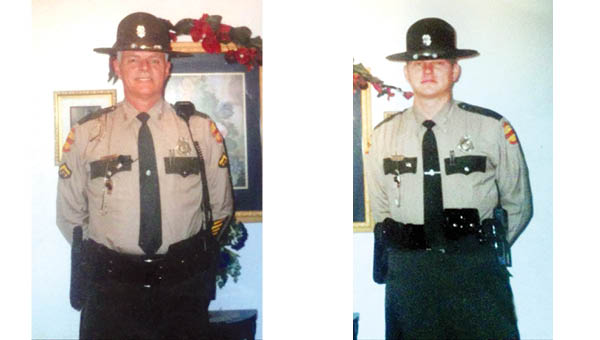Hallelujah! The Broad Street Bridge is finally opened
Published 10:39 am Thursday, July 3, 2025
|
Getting your Trinity Audio player ready...
|
Those were the words of Elizabethton Mayor Bill Carter, who was one of the speakers at Wednesday’s formal opening of the Broad Street Bridge after a nine-month closure due to damage caused by Hurricane Helene.
Workers spent the day removing barriers on both ends of the bridge, and by 5 p.m., traffic was moving again across the bridge.
Several state and local leaders turned out for the opening, including state Sen. Rusty Crowe, state Rep. Renee Jones, Sen. Becky Massey, who chairs the Tennessee Senate Transportation Committee, and others.
Trending
The Broad Street Bridge is a historic bridge — just four years away from being 100 years old. According to Frank Merritt’s Later History of Carter County, the Broad Street Bridge bill was passed in Nashville in February 1929. Luten Bridge Company of Knoxville was selected to build the bridge, almost a twin of the Elk Avenue Bridge (built in 1926). The bridge was to be built at a cost of $46,000.
Ironically, the reason given by the Tennessee Legislature for building the bridge was to give the people of the Stoney Creek area easier access to their jobs at Bemberg, which had just opened, and the bridge would relieve Elk Avenue traffic — one of the reasons given for the most recent repairs.
The old saying, “You don’t miss something until it is gone,” was very true with the Broad Street Bridge. It was an inconvenience for people who were used to traveling across the bridge every day — to and from work, to the grocery store, to Wal-Mart and across town. It caused traffic jams in town and, in some instances, accidents.
Mayor Carter said at the bridge reopening Wednesday that over 28,000 cars crossed the bridge daily.
It was last redone in 2005 and includes five spans. The bridge is almost 300 feet in length.
A Tennessee Department of Transportation official said East Tennessee’s unique geological features under the bridge contributed to the delay in work. The work included diverting the water from the Doe River around the bridge’s footers and from those areas. Crews were tasked with drilling through rocks and pouring new footers.
Trending
The workmen were on the job almost every day from early to late and, more recently, were there until almost midnight. They were there working when many people thought nothing was happening because they could not see them.
Michels Construction Co. was awarded the contract in November to repair the storm-damaged bridge. The contract was a “progressive design-build” contract, which involved a design-build team including the contractor and designer early in the project, leading to a shortened project timeline and improved risk management and cost control. It was TDOT’s second progressive design-build contract.
While there has been a lot of grumbling and complaining about the extended closure of the bridge, you don’t build or repair a bridge with expensive damage overnight. A lot of the time, the criticism was uncalled for because much of the work being done could not be seen.
We thank the crew of Michels Construction Co. for their work and expertise. During the last few weeks of work, an American flag was displayed from a large crane on the bridge, which was a welcoming sight for businesses and residents who lived nearby.
Now that traffic is moving again across the bridge, we’d like for the city to turn its sights toward making the walking trail under the bridge “walkable” again with new lights. A lot of people walked and biked the linear path daily before the bridge closure. Also, some water in the mill race again would be nice.
And we’ve heard a lot of people comment on hoping to see the Cat Island Park repaired and reopened again. It was a great “fun” venue for families.
And we do say, “Thanks” for your work to make this community the great community that it is. Hallelujah!





